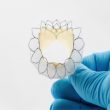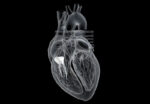Courtesy of the SBHCI. This seems to be the year for transcatheter mitral valve devices, and the ARTO system tested in this study looks promising for the treatment of patients with severe mitral regurgitation who are symptomatic due to heart failure and ejection fraction <40%. The study enrolled 50 patients who underwent clinical and ecocardiographic follow-up...
SOLACI CACI 2017 | Perspectives of Transcatheter mitral valve replacement (TMVR): early data
Read articles on the main presentations of the first day of SOLACI-CACI 2017 Congress. See the presentation by Dr. José Luis Navia, entitled “Perspectives of Transcatheter mitral valve replacement (TMVR): early data”. We are interested in your opinion. Please, leave your comments, thoughts, questions, etc., below. They will be most welcome.
Mitral Valve Global Registry: transcatheter mitral valve replacement due to native valve disease
Courtesy of the SBHCI. The risk of surgical mitral valve replacement in patients with significant annular calcification is very high. There are isolated reports of transcatheter mitral valve replacement with balloon-expandable valve in this patient population. In consequence, this multicenter registry tries to concentrate information and analyzes the outcomes a year after the procedure. ...
Transcatheter Mitral Valve Replacement for Severe Mitral Regurgitation: A Global Study
Symptomatic mitral regurgitation is associated with high morbidity and mortality that can be alleviated partly by surgical mitral valve replacement. However, many patients do not undergo surgery. Transcatheter mitral valve replacement is an appealing option for this selected patient group. This study aimed to examine the effectiveness and safety of transcatheter mitral valve replacement...
Transcatheter Mitral Valve Replacement: A New Arrow in the Bow
Original Title: Transcatheter Mitral Valve Replacement in Native Mitral Valve Disease With Severe Mitral Annular Calcification: Results From the First Multicenter Global Registry Reference: J Am Coll Cardiol Intv. 2016;9(13):1361-1371. doi:10.1016/j.jcin.2016.04.022 Gentileza del Dr. Agustín Vecchia. The risk underlying the surgical approach to mitral valve replacement in patients with severe mitral annular calcification is high. A...
Percutaneous mitral valve replacement: First steps
Original Title: Percutaneous Transvenous Transseptal Transcatheter Valve Implantation in Failed Bioprosthetic Mitral Valves, Ring Annuloplasty, and Severe Mitral Annular Calcification. Reference: Eleid MF et al. JACC Cardiovasc Interv. 2016 Jun 13;9(11):1161-74. Courtesy of Dr. Agustín Vecchia. Transfemoral percutaneous transvenous mitral valve implantation is a promising technique and, despite the fact that no devices...
Plastic versus mitral valve replacement in ischemic mitral regurgitation
Unlike degenerative mitral insufficiency, ischemic failure is due to an increase in the left ventricular cavity, the loss of its elliptical form, ring dilation and displacement of the papillary muscles leading to the loss of coaptation the leaflets. European and American guidelines suggest the intervention on the mitral valve in patients with ischemic mitral regurgitation...
Cardioband in Tricuspid Valve Regurgitation
Untreated tricuspid regurgitation (TR) has been associated to high morbimortality. Surgical treatment of isolated severe TR is complex and carries a high mortality rate. A transcatheter treatment of this valve is currently being developed, and different concepts are being applied to the new devices. Even though most TR is secondary, atrial functional tricuspid regurgitation (A-FTR)...
TricValve: 12-Month Evolution
Tricuspid regurgitation has become increasingly common, and current pharmacological treatment options are limited. In turn, surgery, which is a complex alternative, carries considerable rates of complications and mortality. In response to this issue, various percutaneous systems are being developed, such as edge-to-edge treatment, percutaneous annuloplasty, and caval valve implantation (CAVI), among others. In the analysis...
MYVAL, a TAVR Balloon-Expandable Valve with Promising Results
TAVR has been shown beneficial over time, and with the development of new generation of prosthetic valves and implantation techniques, outcomes have been improved, reducing the incidence of leaks y and the need for definite pacemaker. This study looked at the evolution of 100 patients with symptomatic aortic stenosis treated with Myval THV from Meril...








